beginnings of agriculture
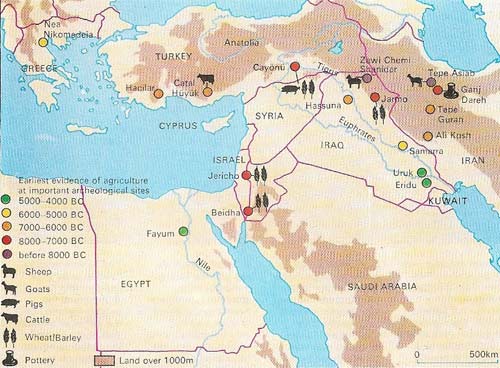
Figure 1. The main area of food production stretched from the Zagros mountains in Iran to the Taurus mountains of Anatolia and down the Jordan Rift. Earliest signs of herding are in Iran c. 8500 BC. Irrigation was carried out in the Tigris/Euphrates basin c. 5000 BC so that the alluvial land could be farmed.
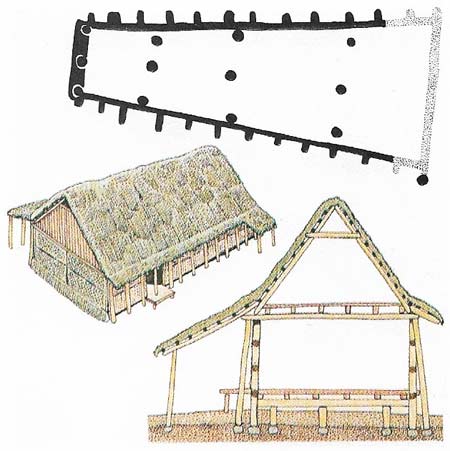
Figure 2. The longhouses of central Europe and Scandinavia are known of from the first half of the 5th millennium BC. The one shown here is a reconstruction of an excavation at Deiringsen-Ruploh in Westphalia. It was just over 16 meters (52 feet) long, about 8 meters (26 feet) wide and the same in height. Longhouses were normally rectangular, but the trapezoidal shape (as here) seems to have been a recognized variant. Many longhouses appear to have been divided in two, but whether this was to separate living quarters from storage is not known. The buildings were constructed on a timber frame.
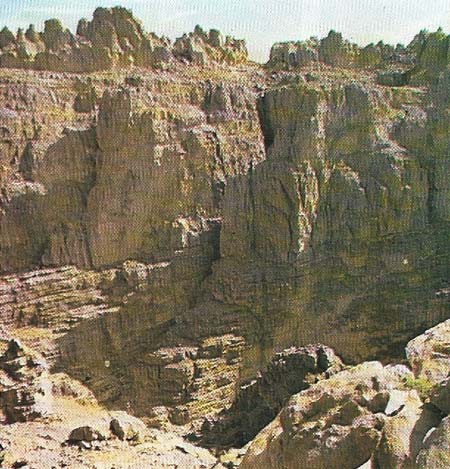
Figure 3. Tassili N'Ajjer, an 800 kilometer-long (1,500 miles), eroded sandstone plateau in the Sahara, contains tens of thousands of rock paintings and engravings. The cattle and wild animals that flourished in the equable climate about 3000 BC are superbly depicted, but no other evidence exists to help identify the ancient inhabitants of this region.

Figure 4. Grain was first harvested with sickles made from stone insets in a bone or wooden shaft. This example comes from the Fayum, Egypt.
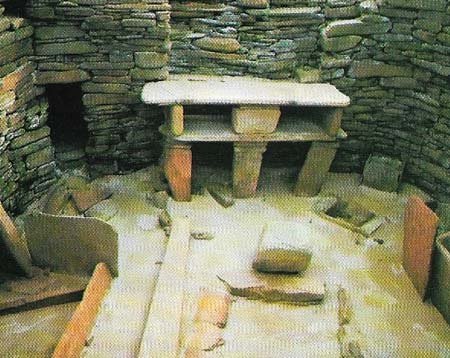
Figure 5. Skara Brae, in the Orkney Islands, was occupied by herdsmen and fishermen around 1800 BC. As there was no wood on the island, houses and furniture were made of stone. One village includes eight connected huts, each with a hearth, two slabs for beds, and addresser and wall cupboards.
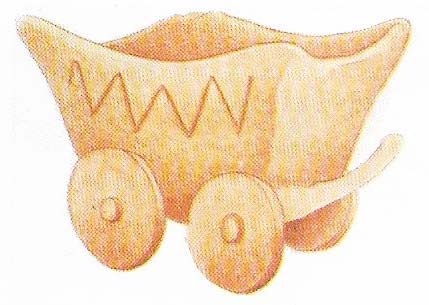
Figure 6. A pottery model of a cart (c. 1900 BC) from a grave in Hungary is the earliest evidence of wheeled transport in Europe.
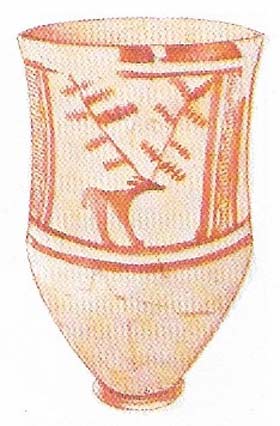
Figure 7. This beaker from Siyalk, Iran, was made about 4000 BC, by which time the potter's wheel was in use. The earliest Neolithic settlements in western Asia have no pottery, the first appearing about 7000 BC. In Japan the Jornon culture pottery predates agriculture by several millennia.
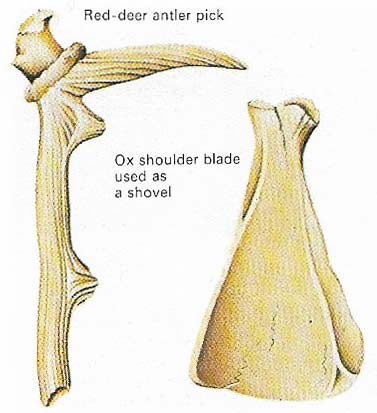
Figure 8. Animal bones and antlers were used in flint mining, which was an important Neolithic industry in western Europe. At Grime's Graves, Norfolk, shafts were sunk through the chalk and galleries tunneled to reach the flint layers.

Figure 9. Mnajdra, one of the many fine mega-lithic temples in Malta, is trefoil-shaped and dates from the early Copper Age (c. 2800 BC). The first colonists of the island arrived from Sicily about 4000 BC. A thousand years later, collective burials in rock-cut chambers eventually gave rise to elaborate temples unique to Malta. Built of huge upright slabs surmounted by corbelled blocks, they are often decorated with carvings. There was a cult of the dead, with altars for animal sacrifices; corpulent female statues indicate the worship of a mother-goddess. The megalithic tradition extended from the eastern Mediterranean around the coasts of western Europe.
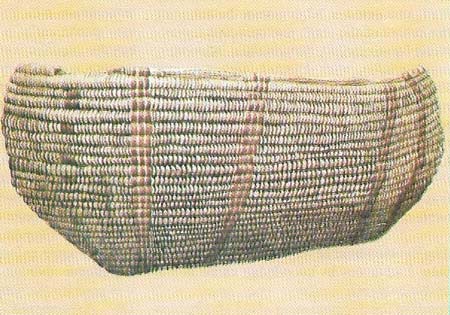
Figure 10. Wheat and barley were the staples of Neolithic economy in the Middle East. By about 4500 BC these cereals had spread from there to Egypt. This 40 centimeter-long (16 inches) basket is made of coiled flax and may have been used for sowing. It was discovered in a grain storage pit in the Fayum.
Until the Neolithic or New Stone Age the domestication of plants and animals was little practiced. Agriculture developed at different times and rates in different places, and took various forms: plant-cultivation, pastoralism, and mixed farming. Although the switch from total dependence on food gathering to the beginnings of food production was a gradual evolution, its long-term effects were nothing short of a revolution. Every food plant and animal of importance today was domesticated during the Neolithic.
The first farmers and herdsmen
Early in the eighth millennium BC cereals were cultivated and animals herded between latitudes 30° and 40° N, over an area stretching for a thousand miles from Anatolia to Iran (Figure 1). This region offered a variety of wild plants and animals that could be domesticated. Early man found wheat and barley growing on the uplands, and goats and sheep grazing on the slopes. Indeed, the wide variety of ecological zones and natural resources would have enabled hunters. fishermen and food-gatherers to live a semi-sedentary life even after the end of the last Ice Age, about 8000 BC.
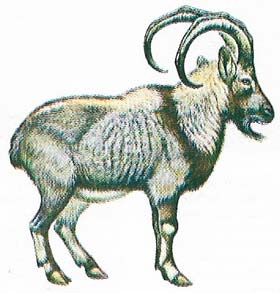 |
| The bezoar (Capra hircus aegagrus), the wild ancestor of domesticated goats, still lives in the mountains of southwestern Asia. Goats and sheep were kept in herds before 8000 BC, the first animals to be domesticated. |
Initially the growth of agriculture and herding was slow and haphazard. Wild grain would have been collected and dropped round the settlement and hunters probably captured young animals and brought them home. In these early stages of farming it is not easy to distinguish between wild and domesticated flora and fauna. Animals evolved smaller forms and there were gradual changes, for example in the size and shape of horns. From the number of bones unearthed at Zawi Chemi Shanidar in northern Iraq, it seems that sheep may have been herded on the Iranian plateau as early as 8500 BC and goats not long after.
Evidence of cereal cultivation is harder to prove; cereals are preserved only in exceptional circumstances. Grain carbonized as a result of fire, or impressions left in clay ovens or storage pits, are often the only clues that remain. However, it is known that selection, promoted by some significant mutations, resulted in higher-yielding grain. Some of the evidence provided by Neolithic sites may be purely circumstantial – the discovery of sickles need not necessarily imply cultivation. Experiments in Anatolia using stone-bladed reaping knives (Figure 4) showed that one family would have been able to collect enough wild wheat during three weeks' work to provide for them for a whole year.
Early Neolithic settlements
Most of the early Neolithic sites were located near springs and were occupied for thousands of years. Enormous mounds or "tells" accumulated from the remains of mudbrick houses and generations of rubbish provide archaeologists with a rich store of information. One of the most thoroughly investigated sites is Tell es Sultan at Jericho, which must have housed as many as 3,000 people during the "Pre-Pottery" Neolithic period around 7000 BC. Catal Hiiyilk in Anatolia, the largest known trading center, was four times the size of Pre-pottery Jericho by 6000 BC and may have been a sizeable settlement much earlier, although the earliest levels have not yet been excavated. It probably had a monopoly of nearby sources of obsidian, the chief material for tool-making: copper and marble were also obtained from the mountains and shells from the Mediterranean. Pottery, weaving and other arts and crafts reached a high standard. Religious beliefs centered on the worship of a fertility goddess, depicted in plaster reliefs, and a cult of the dead: wall paintings show vultures hovering over headless human corpses. However, the dominant theme in the shrines was the bull symbol of virility.
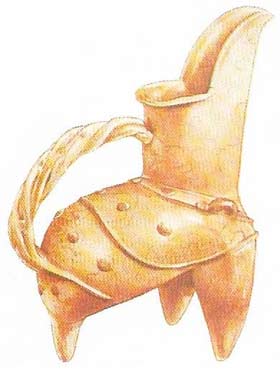 |
| Three-legged pottery jugs, typical of the Lungshan Neolithic of Shantung (c. 2000 BC), seem to copy bronze work, although there is no evidence of earlier bronze pieces. |
Reasonably secure in their settlements and supported by an agrarian economy Neolithic populations increased rapidly. With irrigation – which may have been introduced at Jericho – it was possible to expand into the lowlands of Mesopotamia. A settlement at Hassuna in the north dates from before 6000 BC, and a thousand years later the alluvial plains of the Tigris/Euphrates were being exploited at Eridu in the far south. Mesopotamia now became the heartland of Neolithic culture, laying the foundations for Sumerian civilization.
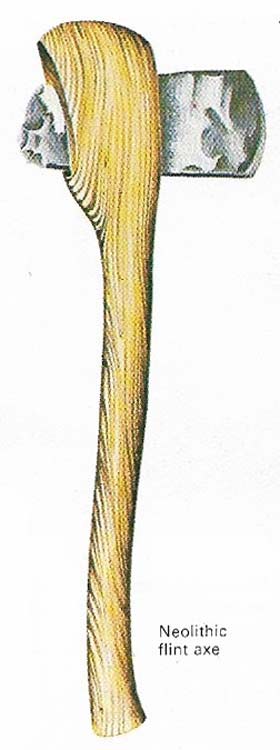 |
| Polished stone axes set in wooden hafts were used for forest clearance and carpentry. The flints and other rocks used for these highly efficient tools were shaped in "axe factories". Their provenance tells us much about trade routes. |
Meanwhile food production spread from Anatolia to Greece and on into Europe. Land cleared by slashing and burning enabled agriculturalists to exploit the fertile soils of the Danube basin; and at the same time the megalith builders (Fig 9) were moving round the coasts of western Europe.
The staple crops of different cultures
The civilizations of western Asia and Europe were founded on wheat and barley, which are adapted to temperate climates and the subtropics, while millet, rice and maize are better suited to the tropics. Rice was cultivated in India earlier than in China, where millet was the main crop (and the pig the main domesticated animal) until about 2000 BC. In sub-Saharan Africa edible tuber cultivation may have preceded that of cereals (millet and sorghum), although there is no conclusive archaeological evidence. However, the evidence of numerous rock paintings shows that about 3000 BC pastoralists were able to find grazing all over the Sahara (Fig 3) in the period before the area became entirely desert. In Mexico primitive maize was cultivated by 5000 BC, but there were no fully sedentary populations in America before 1500 BC.
